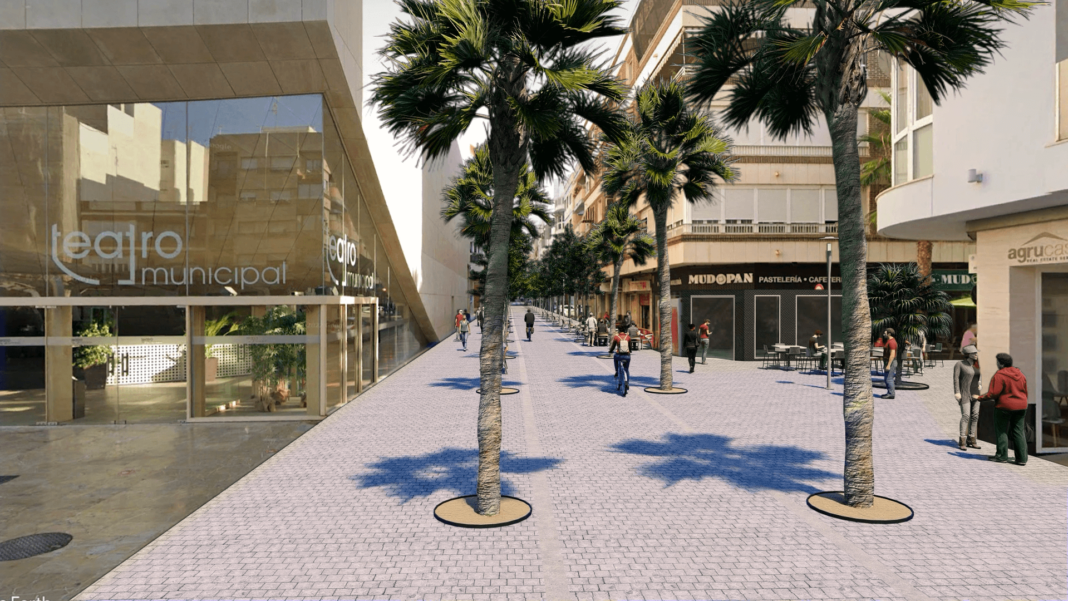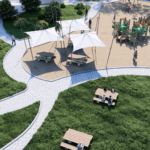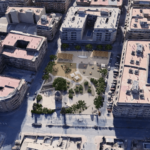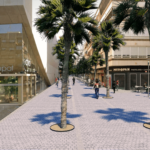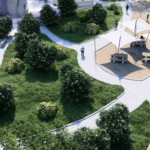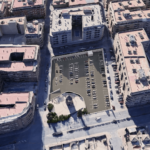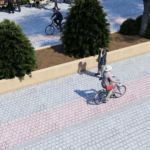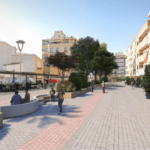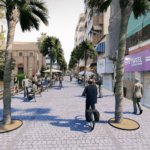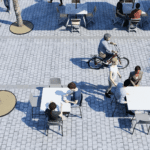In the event that the group gets elected in May, Pablo Samper, candidate for mayor of Sueña Torrevieja, has publicly presented the latest ambitious project to improve the town, this time for the pedestrianisation of the urban area of Torrevieja, which in his words of Samper “will totally change the image of the centre of Torrevieja and adjoining areas, with the return of citizens to the street. Thus, pedestrianised streets will replace cars with families, adults and children who will walk and play in environments with zero pollution and without risks of being run over, in an environment surrounded by urban gardens full of plants and trees.
Whereas the project would help towards improving air quality in the town, a problem which has not been addressed by the current government team, who have, so far, not progressed with the mandatory Low Emissions Zone requirements, it perhaps would make another situation which is a constant criticism of many worse, the complaint of the lack of parking.
Samper affirms that “it is an exciting and ambitious project, being Sueña Torrevieja the political party that for the first time clearly defines the parameters of the model of the city that we want to achieve, which is something we have been working on for years.
Initially we intend that the area is defined between the streets calle Orihuela and Rambla Juan Mateo, and San Pascual and Paseo Vistalegre, leaving exit and entrance roads to the urban area, as well as loading and unloading areas, for access to residents and emergency services”.
“In Sueña Torrevieja we work with facts, with realities, we want to make Torrevieja a more modern, more familiar and more pleasant city,” says Samper.
In the pedestrianisation project, a series of objectives stand out, among which are the pedestrianisation in connection with the new points of attraction that will be created, such as the Mercado de Abastos (La Plasa), the Port and the Station Park.
The plan would also, it is hoped, lead to the recovery of the commercial centre of the town, which has been degrading for many years, with constant movements of residents and visitors that will be enormously attractive for merchants and entrepreneurs, which will immediately imply a revaluation of all properties, both commercial premises, (many of them closed today) and homes.
There would still be access to residents, as access will be permitted by means of number plate identification cameras or limited resident access cards and the control of loading and unloading points.
Samper concludes by stating that “this great project will be complemented with the creation of a network of bike lanes that aim to connect the city centre with all the urbanisations of the municipality, a definitive boost to public transport that uses clean energy, with greater frequency and quality and the implementation of large car parks and dissuasive parking areas in addition to those already mentioned”.

